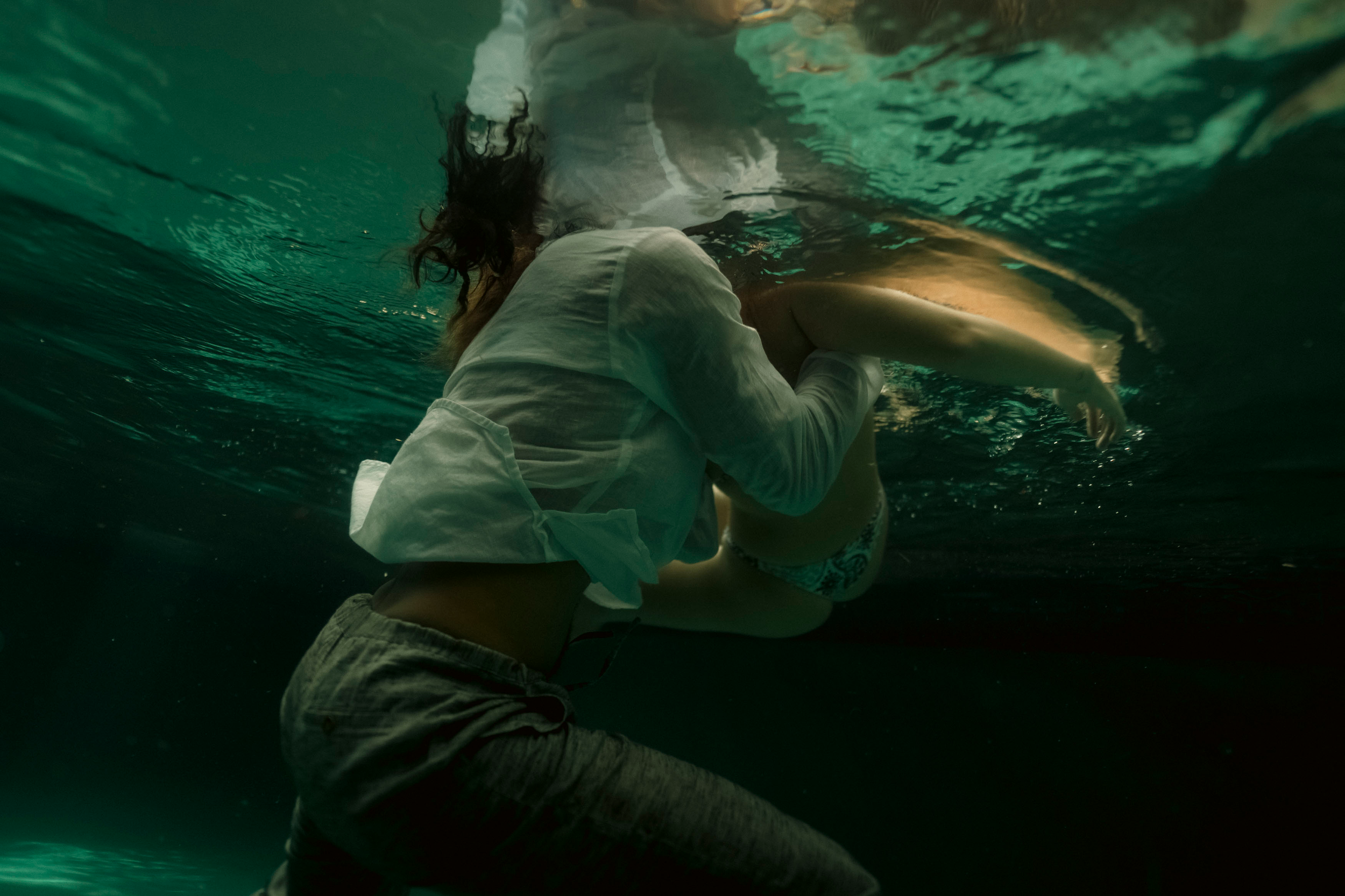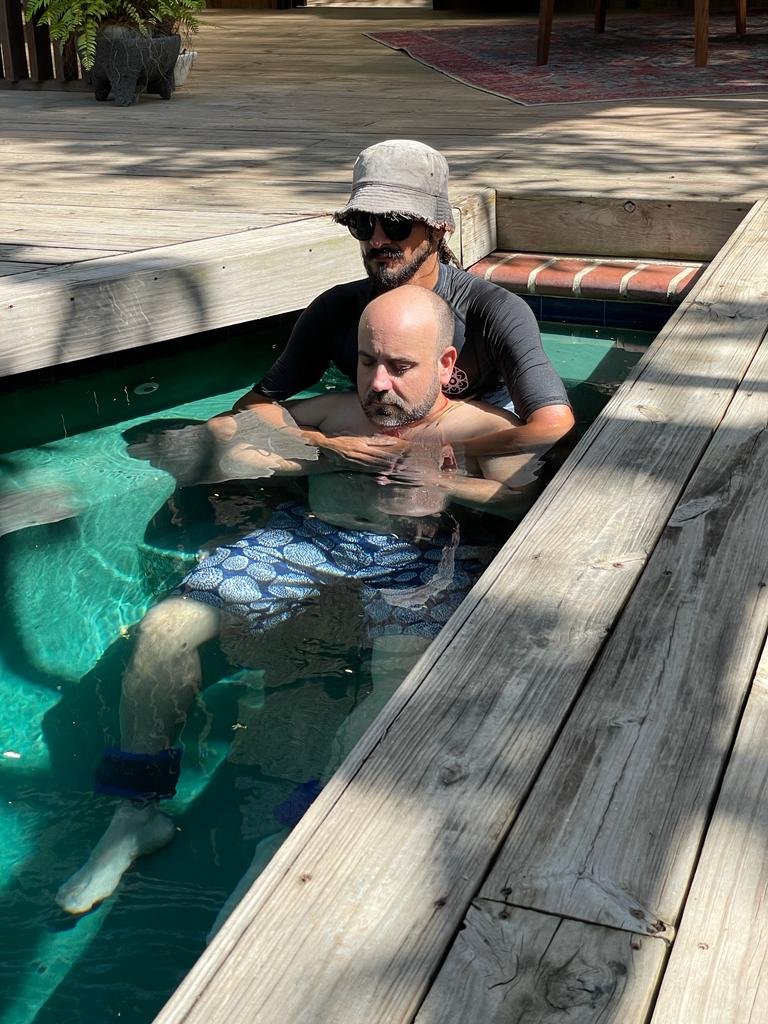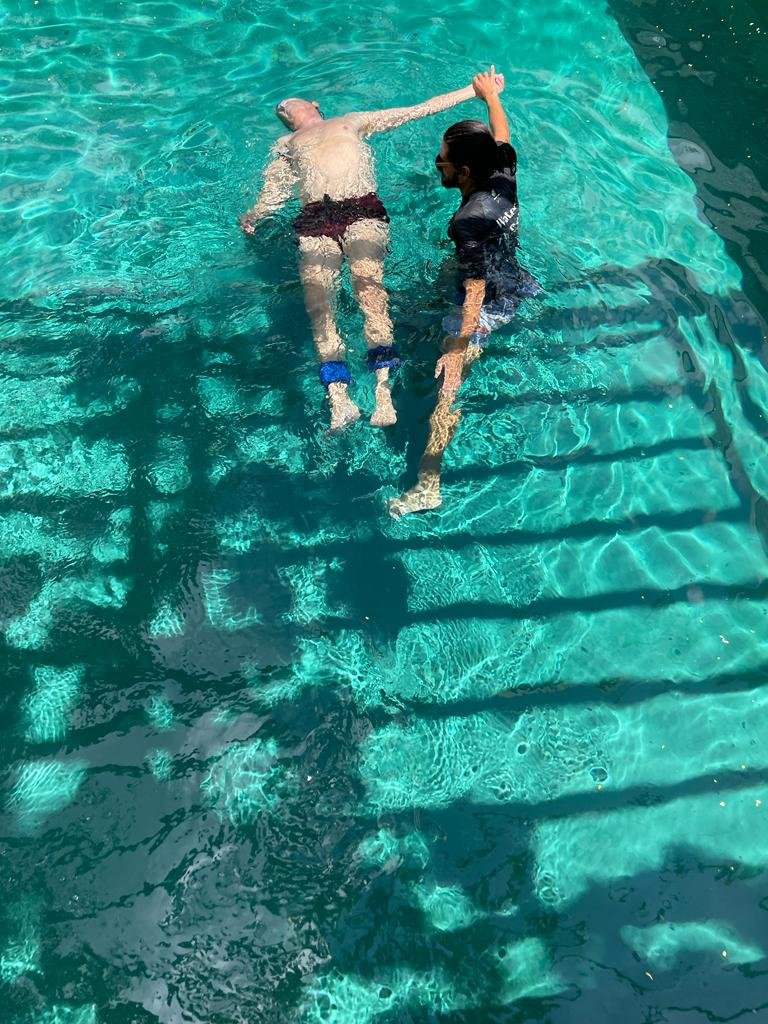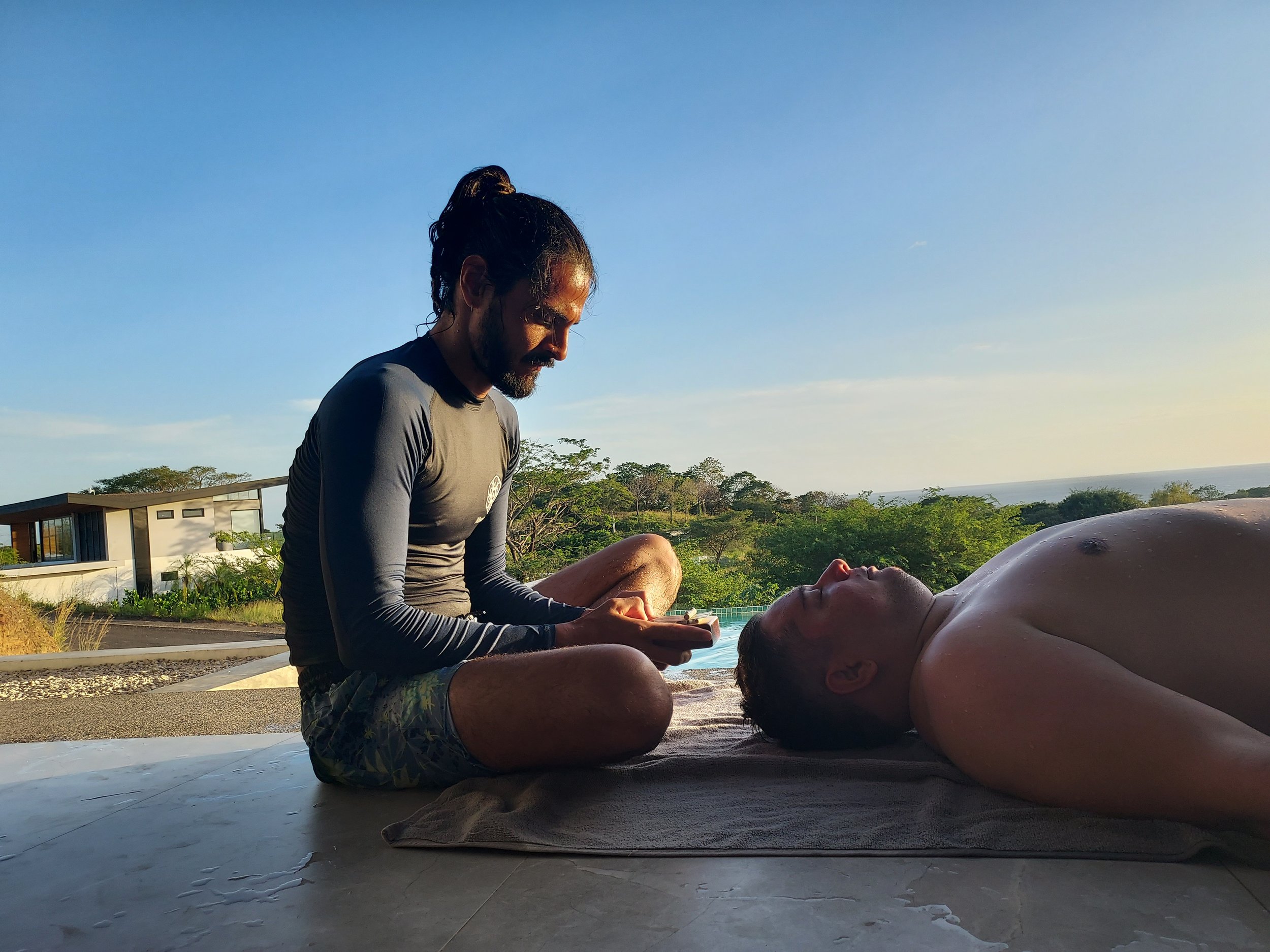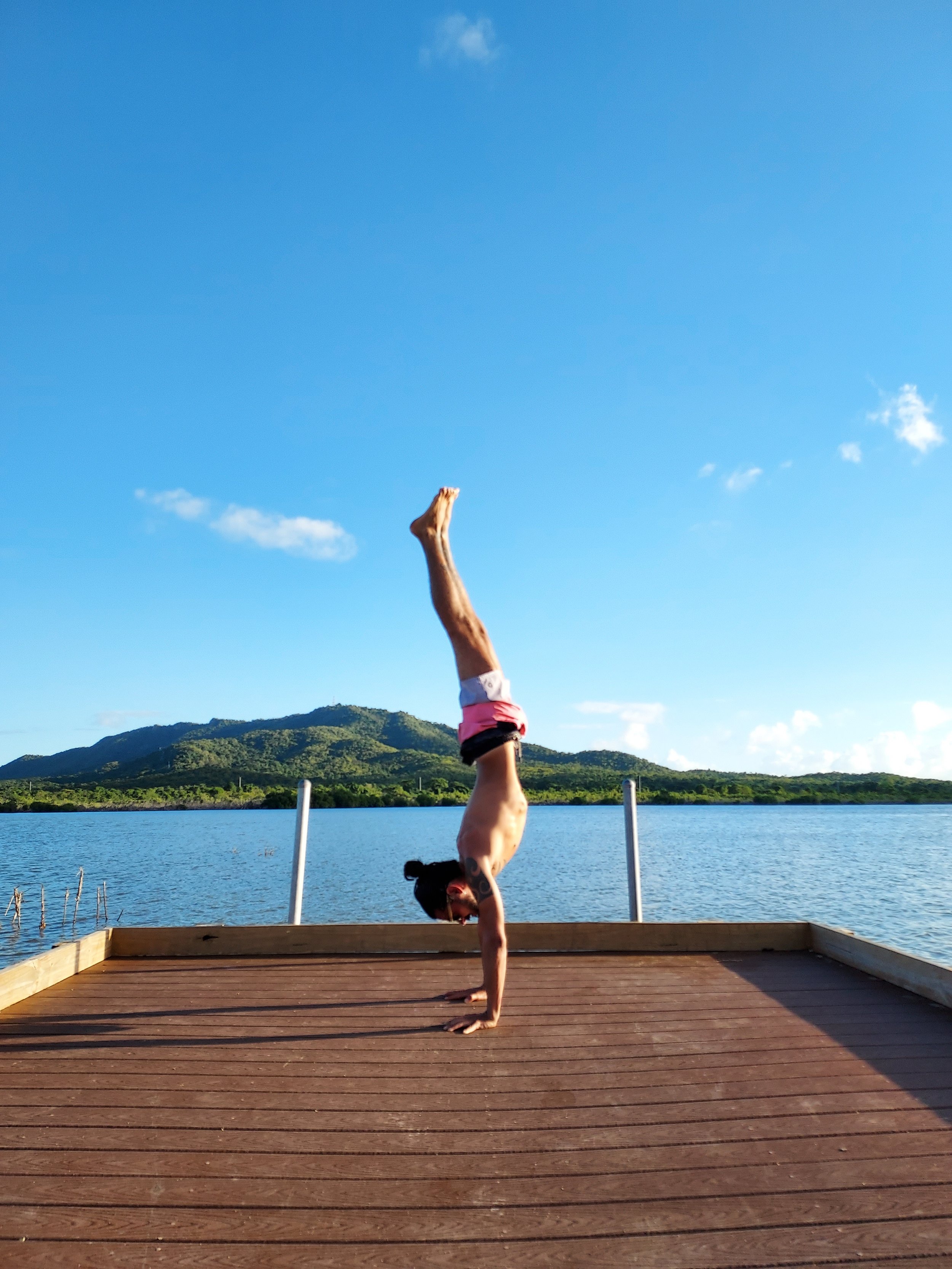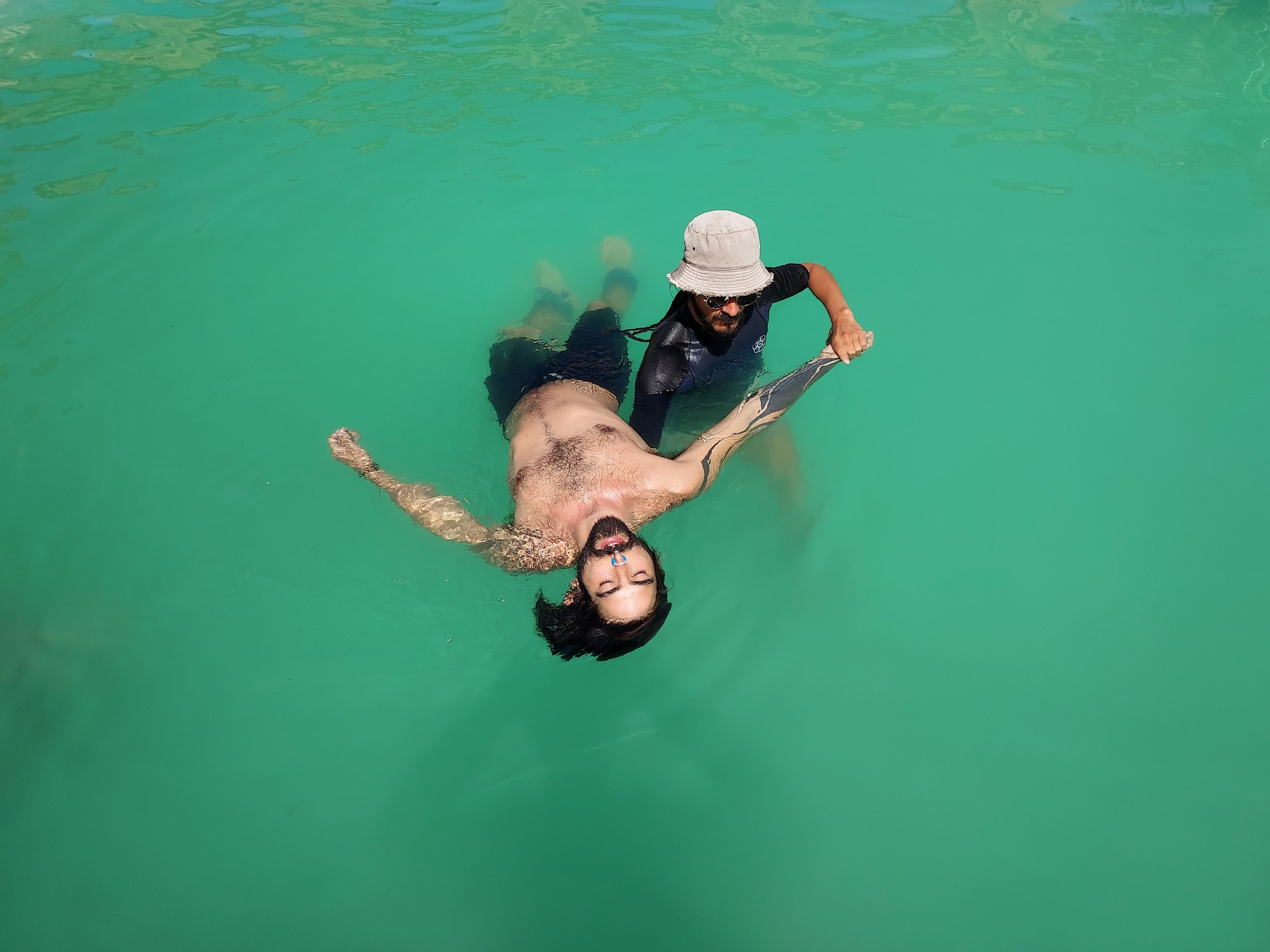
Surf your inner waters, your own ocean of existence
Reconnect with the essence of life
About three-quarters of our body is made up of water, the world where live is made mainly out of water, certainly there is no life without water.
The water you cry was once up in the sky, underground.
In the plants and animals that live all around.
Water like the soul has an old memory
Here from beginning in the same quantity
In the sea, the plants, the river and your body
Not to say in all that you see.
Dance with the Element
Travel immersed with underwater sounds, thanks to the latest technology of aquatic headphones, the sound therapy will help you relax and go deeper on your inner journey.
Stop an anxious mind
Modify the pattern of brain waves from Beta to Alpha, which favors a state of deep relaxation, the appearance of unconscious memories and the release of repressed emotions.
Return to the Source
Relaxes the barriers of the unconscious, allowing a dialogical state with our own Being that enables the "download" of material that guides our lives.
Enjoy the aquatic journey
It expands our sensory perception, leading to deep states of presence.
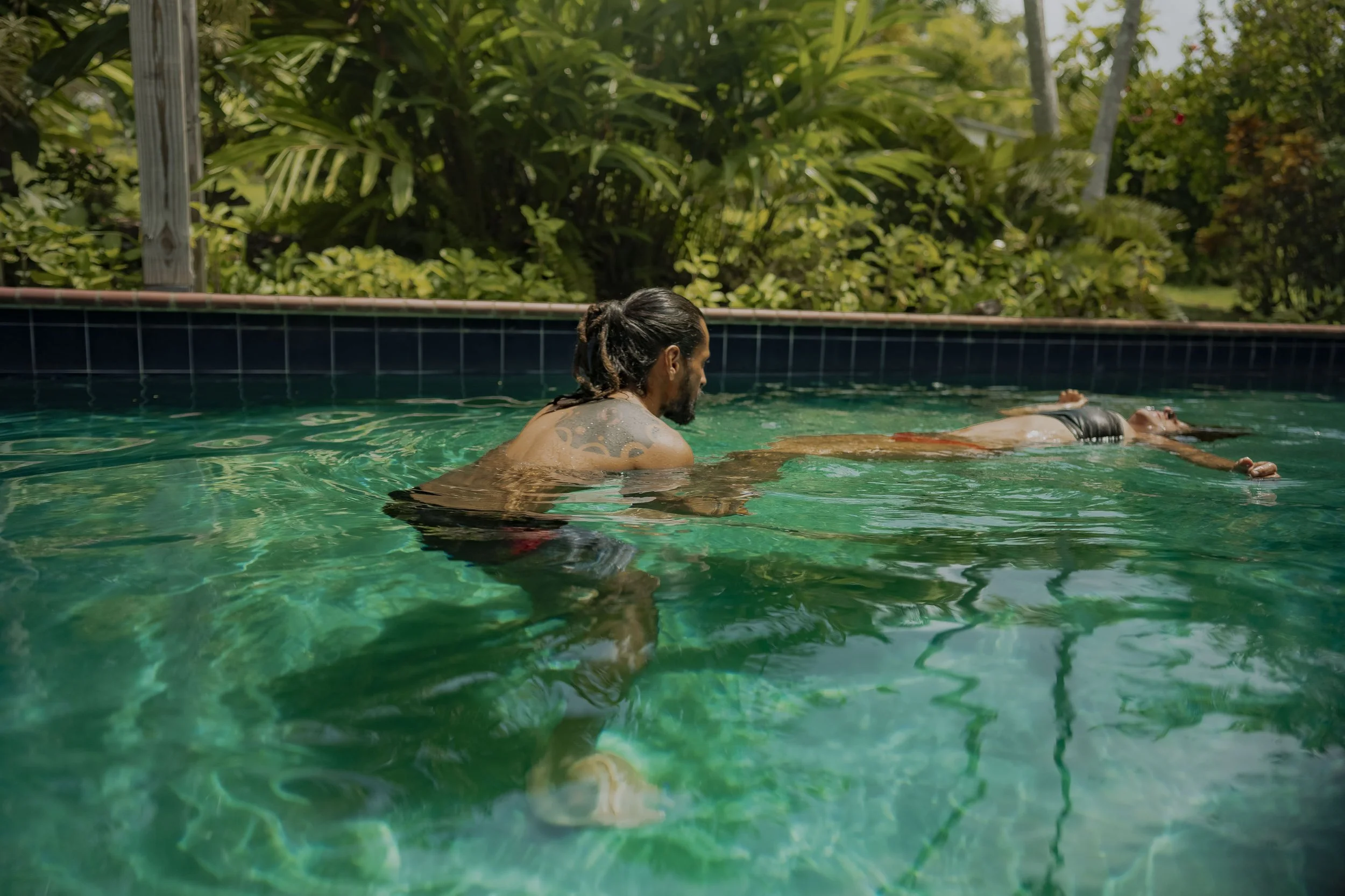
We use sound vibration and three factors of the aquatic environment
Sound Vibration
Water is a conductor of sound vibrations, whales can communicate with each other over 100 km away. Sounds travel through water by moving water molecules. Our body is made up of 70% water. Therefore, it is all our molecules that are moving at the same time. Sound waves have been shown to have an effect on brain waves and thus allow the brain to enter altered states of consciousness. That's why we like to work with sounds as much as possible (aquatic sound headphones, singing bowls, sound diffusion through aquatic speakers… etc.).
Flotation
The body enters a state of buoyancy when submerged in water. This state already allows you to stop feel the gravity and weight of your body.
To fight against gravity, we need muscle tone to keep the body upright. Muscle tone is active 90% of the time, even during sleep. Therefore, it is difficult to find complete muscle relaxation.
The total mobility of the body in the water allows us to manipulate it with great freedom, something that does not happen on a massage table.
To optimize this state, you may need to use floats: head support, lower back and legs.
Immersion
Breathing is completely passive and thoughtless. With the body completely passive, energy expenditure is close to zero and oxygen consumption is minimal.
The immersions are one of the keys to the water flow, they are always short and adapted to each person, which allows reaching a state of natural breathing/apnea.
When the relationship of trust between the therapist and the body is established, then it is possible to allow oneself to stop thinking about one's own breathing, as is customary in the terrestrial world, and thus enter a meditative state.
Temperature
Muscle tone is also involved in keeping the body at an internal temperature of 36 degrees. To maintain total relaxation, we work in hot water > 30 degrees (swimming pool or natural tropical environment). If necessary, we use lycras and neoprene vests, which prevent heat loss. We also use lycra to protect the body from the sun if necessary.
We combine breathwork, chromotherapy, acupressure and sound with acoustic instruments prior and after our water flow sessions.
This technique is one of the most relaxing that exists and offers us an unforgettable experience that transformed the relationship that one has with the water forever
History
Janzu means “pacified river”
Its name was created in the nineties, by the Mexican Patik (Juan Villatoro), during his spiritual journey through Asia, especially in India, to meditate and immerse himself in the wisdom of the East. Patik was the visionary of this Art, who dreamed that the blessing of water would reach everyone, promoted the creativity that emerges from aquatic work and projected a great aquatic community.
FAQ
How long is a session?
A Janzu session last for 90 minutes.
Where does the therapy takes place?
Janzu sessions are flexible and can be enjoyed in a private pool (with heater is the best) or by the ocean, with specific conditions in place.
Who is Janzu recommended for?
Recommended for anyone who wants to experience a journey through water. It is not necessary to know how to swim and it helps the aquaphobic to eliminate that fear. Older people can practice it without risk, children the same.
It brings benefits for pregnant women as it unblocks the lower back, allowing the distension of the compressed organs.
For the future father, the Janzu opens the possibility of getting closer to the experience that his baby is having during pregnancy.
It gives greater mobility to paraplegics and post-operators, calms the nervous.
It is a good option for those people who, due to certain diseases (cancer, for example), do not find it convenient to receive massages.
In the case of children, we can say that they are the ones who know how to take advantage of and enjoy Janzu the most, understanding it as a game or an underwater trip that they greatly enjoy.
How many sessions are recommended for a complete treatment?
4 to 5 sessions yearly are the most suitable for those who want to work more deeply with this therapy.
